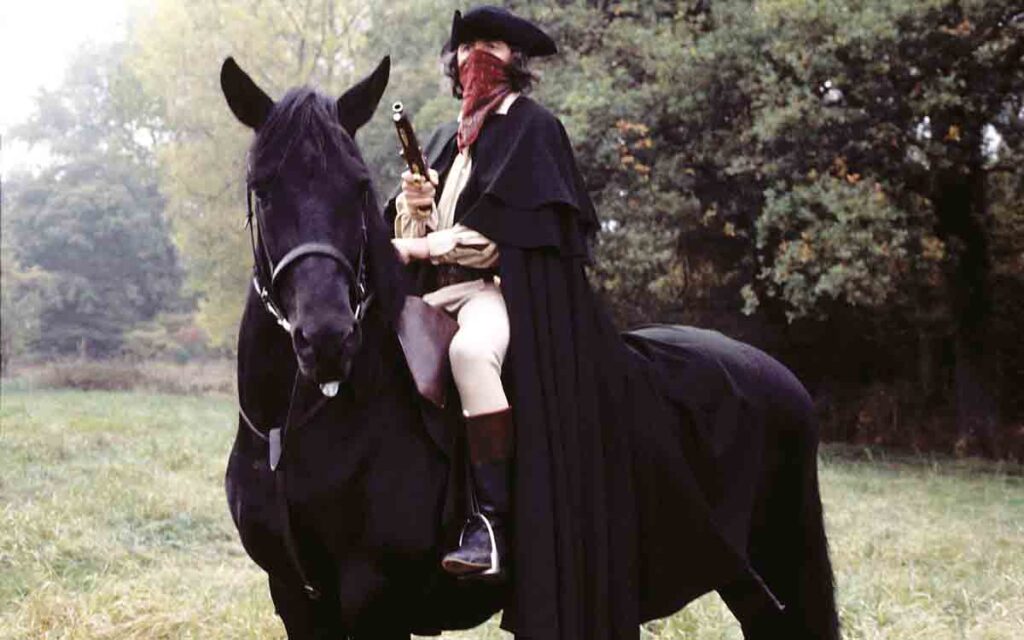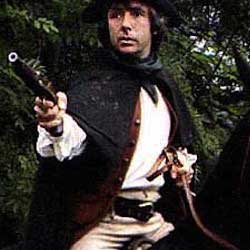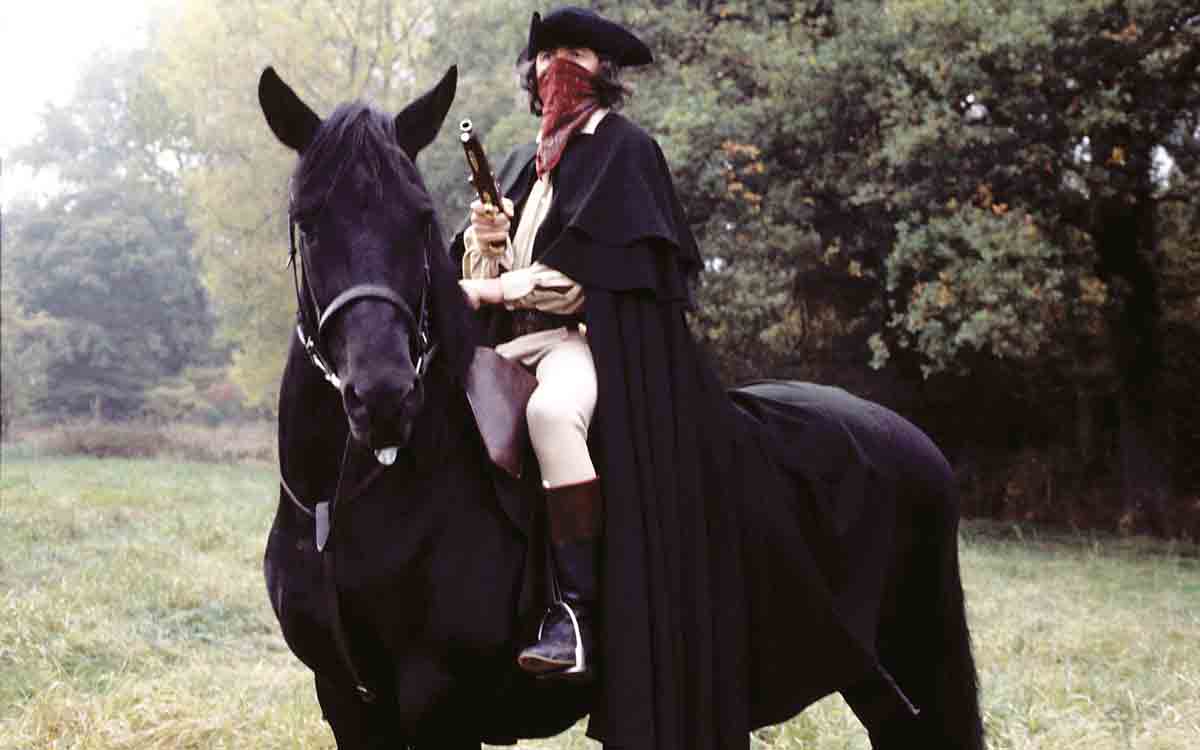Dick Turpin, the notorious English highwayman, was not the romantic figure we’ve been led to believe, says ELLIOT DAVIES

Last year I went on my very first ghost hunt – a fruitless search for Belper’s Horrifying Horseman in Black.
A quick recap – this horseman is rumoured to appear at the crossroads that link Belper and Ashbourne.
Since the hunt, I’ve watched a video online in which arch Derbyshire ghost-botherer Richard Felix drives to the crossroads in question. He speculates that the site of the haunting suggests that, in life, this horseman may have been a highwayman. Highwaymen often stood at crossroads.
Derbyshire certainly had a highwayman problem in the 18th century. However, there are those who believe that Britain’s most infamous highwayman – Richard “Dick” Turpin himself – once paid a visit to the county.
The hills of Millford
Milford is one of the picturesque towns found within Derbyshire’s Derwent Valley.
In the hills above Milford, you’ll find a bridlepath that’s bordered by mossy stones and naturally shaded by dense foliage.
For a walk that will make you feel unstuck from time – where the only sound is that of the wind through the leaves – you could do much worse.
Best of all, the walk comes to a natural conclusion in the village of Makeney, and one of the first buildings you’ll encounter will be The Holly Bush Inn.
This is the sort of pub that feels like it hasn’t changed much since 1973 – and you get the impression that even in 1973 it could have used a lick of paint. Inside it’s cold and dark, yet also warm and inviting, in a way that only the best pubs can be.
They have a fine selection of ales, and most Tuesday nights the local amateur dramatic society meet-up to discuss strategy. This society had their 15 minutes when they appeared on Britain’s Got Talent circa 2008 with a choreographed trolley dance. They didn’t get very far, but nonetheless they appear to have reasoned that if a trolley dance was enough to get them on TV, then surely there lies the path to future success. They’ll, therefore, strive to incorporate a trolley dance into everything they do.
The walls of The Holly Bush Inn in are decorated by all manner of photographs, artefacts and ephemera celebrating local history and farming practices. Of particular note is a signed photograph of Colin Firth, but even more fascinating is a yellowed poster offering £200 for the capture of one Richard Turpin. It’s believed that, in the 18th century, Richard “Dick” Turpin drank at The Holly Bush Inn.
Who was Dick Turpin?
Born in Essex in 1705, Richard “Dick” Turpin would enjoy a desperate and blood-soaked career as a horse thief, a burglar, a poacher and a murderer.
A butcher by trade, he became embroiled in the affairs of a notorious Essex gang who needed a means of disposing of their stolen deer.
But by 1734 the exploits of the gang shifted from poaching to larceny, and by then Turpin was up to his grubby elbows in some highly dubious practices.

Nowadays, Turpin is often remembered as a swashbuckling sort of loveable rogue, but familiarise yourself with the particulars of his crimes and it soon becomes apparent that he was an awful, awful man.
We like to picture Turpin stood in the middle of roads, wielding dual pistols with a scarf tied round his face, patiently awaiting a carriage of rich folk who he’d order to stand and deliver. The truth, however, is a lot less romantic and a lot more violent and distressing.
Turpin and the Essex gang cut their criminal teeth with a series of high profile burglaries.
They’d target not just the wealthy, but also the weak and the vulnerable. A Read’s Weekly Journal from February 1735 describes the “barbarous” assault of Widow Shelley, estimated to be in her 70s, at her home in Loughton, Essex. Turpin knew she had money, but she wouldn’t reveal its whereabouts. So he resorted to torture, laying her across an open fire until she parted with the information.
In the same month – February 1735 – they targeted the house of farmer Joseph Lawrence, another septuagenarian and another poor soul they subjected to torture. As Lawrence wouldn’t reveal the whereabouts of his rumoured fortune, they first pulled down his trousers and dragged him around his house. Next Turpin beat Lawrence’s exposed buttocks with his pistols, before emptying a kettle of boiling water over his head and forcing him to sit naked on his fire. Then, whilst Turpin and his gang again dragged Lawrence round his house – this time by his nose – one of his associates raped a maidservant. And all this was for a haul of less than £30.
Of course, such awful deeds attracted significant heat (if you’ll pardon the pun), which resulted in a call for the arrest of Turpin and the Essex gang. It was when the Essex gang broke ranks that Turpin became a highwayman. He would ultimately be tried and hung for the theft of a horse in 1739, but historians have difficulty in pinpointing his movements in the intervening years. Turpin’s actions in 1736 are particularly murky, and it might be during this year that, with his usual haunts proving too hot to handle, he hit the north – perhaps stopping for a drink in Makeney’s Holly Bush Inn.
Turpin’s life romanticised
Turpin’s life was romanticised almost immediately with the 1739 publication of Richard Bayes’ The Genuine History of the Life of Richard Turpin. This hastily assembled “history” delved shamelessly into the realms of fiction, sowing the seeds of the popular interpretation of Dick Turpin as fearless gadabout that still survives today.
But perhaps more responsible than anyone else for casting Turpin as a likeable anti-hero is our old friend William Harrison Ainsworth – he who wrote the shockingly offensive novel concerning The Lancashire Witches. His 1834 novel Rookwood features Turpin’s fabled dash from London to York on his doomed steed, Black Bess. Ainsworth made the life of the highwayman seem thrilling and appealing – a world away from the cold, desperate and ultraviolent reality. Be it history or literature, it seems that everything Ainsworth touched turned into turgid sludge.
So go to The Holly Bush Inn in Makeney – make it the final destination of your walk along the Milford bridlepath on a bleak and windswept day.
Once there, find yourself a dark corner – the sort of corner into which a hardened higwayman might have slunk sometime between 1735-1739 with the intention of enjoying the warmth whilst escaping the heat.
Nod to his bloody legacy, but don’t drink to it.
Because Dick Turpin was a total bastard.


